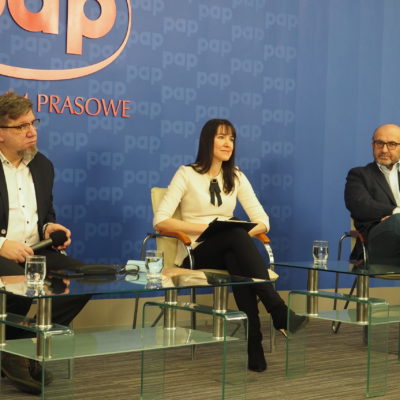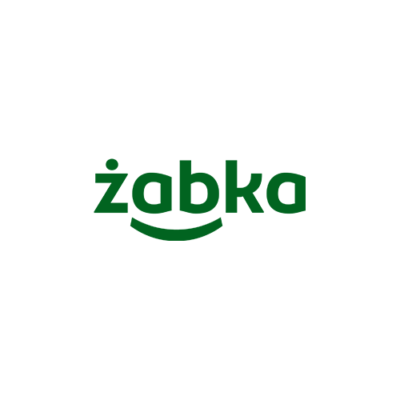The programme standards for the protection of minors from the harmful effects of the content of programmes and other communications (e.g. commercial), which are binding on media service providers, are set out in the Broadcasting Act of 29 December 1992 (Journal of Laws 2020.0.805, hereinafter as: the “Act” or, alternatively, the “Broadcasting Act”) in the form of, inter alia, general clauses contained in:
- Article 16b(2)-(3b) of the Act – in the case of prohibited commercial communications;
- Article 18(4) to (5b) – with regard to the protection of minors in linear services;
- Article 47e(1) to (3) in conjunction with Article 18(4) – regarding the protection of children in on-demand audio-visual media services (VoD).
The regulations provided for in Article 18(4)-(5b) of the Act were rendered more precise, in accordance with the statutory delegation, in the Regulation of the National Broadcasting Council of 23 June 2005 on the classification of programmes or other broadcasts which may have a negative impact on the proper physical, mental or moral development of minors and programmes or other broadcasts intended for a given age category of minors, use of graphic symbol patterns and announcements formulas1 , and the provisions of Article 47e (2) of the Act (concerning the classification and labelling of programmes and broadcasts in non-linear services) – in the Regulation of the National Broadcasting Council of 5 February 2013 on detailed rules for the protection of minors in on-demand audio-visual media services, respectively.
In addition, the National Broadcasting Council (hereinafter also: “NBC”), in order to develop and emphasise the importance of the above-mentioned statutory provisions, issued a position in 20183 , in which it indicated that the protection of children and young people from content that has or may have a negative impact on their proper development is its priority and strategic task, aimed at supporting parents and guardians in the process of shaping the child’s reception awareness. Therefore, the NBC stressed that it would not tolerate any violation of the rules established to ensure the full and effective protection of minors. It also intends to consistently use the statutory legal (enforcement) tools necessary for the implementation of such an important task, i.e. cease-and-desist orders against on-demand audio-visual media service providers, also known as ‘VoD service providers’, or fines imposed on TV or radio broadcasters on the basis of decisions of the President of the NBC.
In addition to the above-mentioned statutory regulations and tools designed for the protection of minors, Polish and European legal regulations provide for the possibility of using the so-called mechanisms and instruments complementary to statutory law, e.g. in the form of self-regulatory acts – voluntary initiatives of commercial entities allowing for the implementation of jointly adopted guidelines, in order to increase the level of consumer protection.
The main advantage of self-regulatory solutions is that they are more flexible than statutory solutions. It provides an opportunity for the market to rapidly adapt the level of protection of viewers and users in line with the dynamics of technological and social change in the ways media are both distributed and received.
In the context of ensuring an adequate level of protection of children, it is also important to increase the responsibility of media service providers and other stakeholders (e.g. advertisers, marketing agencies, food producers etc.) for the audio-visual content broadcast through voluntary acceptance of additional – commonly agreed – obligations and restrictions, sometimes not explicitly resulting from the wording of the legal norm.
Self-regulatory acts in force in Poland concerning the protection of minors against harmful content can be divided into two groups6. The first group consists of self-regulations that are complementary to the statutory provisions, complementing them or rendering them more precise. This applies in particular to the areas where the legislator uses general clauses and vague terms or provides for an optional right of the NBC to issue a regulation regulating a given legal area. An example of such an act is the Agreement of TV broadcasters on the rules of broadcasting advertisements and sponsor references concerning food or beverages containing ingredients whose presence in excessive amounts in the daily diet is not recommended, adopted under the auspices of the NBC. Under the provision of Article 16b(3a) of the Act7, the broadcasting of such content in children’s programmes is prohibited. Pursuant to Article 16b (3b) of the Act, the NBC may, after consultation with the Minister of Health, determine by regulation both the types of foodstuffs or beverages containing ingredients whose presence in excessive quantities in the daily diet is inadvisable, and the manner in which commercial messages relating to those items may be inserted in programmes so that they do not accompany children’s programmes. The optional nature of the regulation gives the NBC the possibility to refrain from issuing it if the objective pursued by the legislator in enacting this provision, i.e. ensuring the protection of children and young people from commercial communications promoting the above-mentioned foodstuffs or beverages, is achieved without the need for the market regulator to introduce top-down, detailed guidelines in the form of an implementing act.
Thanks to this solution, entities operating in many markets (audio-visual, advertising, food and beverages, marketing, etc.) are able to propose their own self-regulatory mechanisms and tools, making a given legal norm more specific, while minimising the risk of the regulator setting excessive or over-burdening obligations on providers, and consequently creating the adverse phenomenon of overregulation.
It should be emphasised that the NBC still retains full power to regulate the issues in question on its own, both in the form of the above-mentioned measures disciplining providers and by using the possibility of issuing an implementing act – in the event that self-regulation proves ineffective and insufficient.
A similar mechanism operates in the case of the Code of Good Practice on the detailed rules for the protection of minors in on-demand audio-visual media services. Pursuant to its provisions, which constitute a further clarification of Article 47e (1) of the Act9, the public on-demand service in which the content offered in the VoD catalogue is unsuitable for minors, may be made available only and exclusively with the use of appropriate technical safeguards or other measures. The Code specifies the general statutory prerequisites and supplements them with a list of requirements which the security systems must meet to be considered effective. At the same time, the NBC, as in the case of the Agreement of TV Broadcasters, retains its authority to issue, in agreement with the minister competent for information technology, a regulation in the subject matter if the regulations developed by the industry would not meet the objectives of the Act.
Therefore, the functions of self-regulation described above are clearly defined, but in order to assess their effectiveness, regular and independent monitoring is crucial, which only the authority regulating the audio-visual media services market can ensure. Therefore, the NBC, in accordance with the statutory indications, not only supports self-regulation and promotes the establishment of codes of good practice11, but also successively analyses and studies their effectiveness.
To this end, in 2020, the Monitoring Department of the NBC Bureau carried out a comprehensive monitoring of TV channels and VoD services, verifying the degree of compliance by media service providers with the provisions of the three self-regulatory acts mentioned at the beginning regarding the protection of minor viewers. The following pages of this report present the results of the monitoring of the implementation of these provisions. It should be noted that each of the analyses described in the study conducted in a different period of time and was carried out on the basis of a different methodology, appropriately adjusted to the specifics of a given self-regulation. Presenting them together allows to describe to what extent the market, including media service providers, assumes responsibility for the safe use of television and Internet offers by minors.









